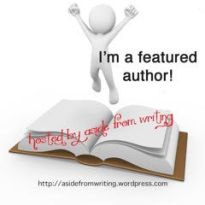
Yahoo Image Search
Honestly, I don’t know what to say about Tarot because I feel like I’ve heard and said it all throughout the years. As I mentioned before, I hung out with a lot of Wiccans and this was a common tool. Everyone had their own deck and there were various spreads with people having different preferences. It was interesting how every person seemed to have their own flavor here. That makes it even more difficult to go into detail because there’s an individuality that I saw at times.
I think most people have a general idea of how these work too. You have the person think of question or ask it out loud while one of you shuffles the deck. Depending on the details, you choose the cards and place them one by one. This was typically done face down to prevent either party from jumping ahead or making assumptions in the early stages because of what they see coming. I remember this being important in the 3-card Past, Present, and Future one. Interesting thing is that I only remember seeing the 3-card and the very complicated Celtic Cross in college, which felt like the two extremes. Anyway, you go card by card with each one having a certain meaning, which is also dependent on if it’s right side up or upside down. Again, you have some vagueness to the answers to allow for personal deciphering.
So, what can I really say about tarot? I mean, it does get used a lot in fiction and sometimes even correctly. All I can share are some tips that one can consider when working this into a story.
- Study the spreads that you want to use. Each card has a different meaning and goes in a specific order. Most readers won’t realize if you mess up, but you’d be surprised what happens when people see you put research into this. They accuse you of being a witch and try to burn you at the stake . . . or they point out in a review that it’s really good that you didn’t fake the details.
- Not every deck needs to be flashy with intricate paintings on the back. It’s more important that they are easily identified. I met a few Wiccans who preferred simplistic designs because they had less of a visual distraction. Of course, this decision depends entirely on the character.
- Apparently, tarot began as playing cards, which might not have any purpose other than it’s an interesting tidbit.
- The suits don’t always have to be the established ones because there are different combinations. There should always be four and then the Major Arcana, but you can use a variant. Typically, it’s sword, coin, cup, and baton/staves, but there’s no reason a non-Earth story needs to stick with those exact choices.
- Energy is very important with tarot, which is why you never touch a deck without permission from the owner. Most likely, you will only be allowed to touch it when doing a reading too. The reason is because the owner of a deck takes the time to sync with the cards and put their own energy into it. Random touching can contaminate them and requiring a cleansing. I do remember there being some communal decks, but was always told that they weren’t always trustworthy. You might think this is strange, but fortune telling does require clarity of mind and energy.
That’s all I can really think of as far as tarot goes. There’s plenty of sites out there to help you figure out more. Fortune telling in general is a tough addition to a story because you want to give foreshadowing without being obvious. Yet, being too vague can cause all sorts of problems as well. This might be why you don’t see it that often and villains tend to have the seers who warn them of an imposing threat. That one we can all see coming since we follow the hero throughout the story. Still, using this could always cause a small problem in terms of spoilers, so be careful.





I’ve got a tarot deck. It’s colourful, but not overly fancy. I’ve had it since I was in my teens. I’ve done more with tarot than runes, but ran in to a slight problem when I lost the last of my sight, because there’s no tactile markings on my deck. Hubby’s offered to help fix that, but I’m not sure how I feel about messing with my cards like that. On the one hand it would be nice to be able to “see” what I’m working with. On the other hand… I’m not sure how to explain, but it feels weird to even consider doing such a thing to my cards.
LikeLike
I would say Tarot is second only to zodiac signs in present day. At least in this country. I get it with the idea of altering them. They’re supposed to have power as they are, so changing that could have a negative effect. This might be just as ridiculous an idea, but is there a way to scan them into a program and have the computer say the card? That might be too techy though. Touch and energy is very important to this, so I’m guessing this is a fail.
LikeLike
A while back, I got an app for my phone that tells me what I’ve just taken photos of. I never thought of it as more than a cool way to make a camera accessable, but then my brother – also blind – used it to tell the difference between his bags of flour recently. So now, after your comment, I’m wondering if it can identify tarot cards. If so, I could possibly take a photo of the card I need to identify and have it tell me what it is. I’ll have to try that…
LikeLike
Very cool. I really hope that works for you.
LikeLike
When I try it, I’ll let you know.
LikeLike
Do you use a form of this system? (Trying to remember if you said you did in a previous post.)
LikeLike
I’ve never really done Tarot myself. There are various forms and structures for readings though. Many decks come with a book that gives you options.
LikeLike
Fascinating, Charles. I would like to get a reading some time
LikeLike
Thanks. Wish I knew how to do it. 🙂
LikeLiked by 1 person
Would be fun.
LikeLike
I’ve played around with doing tarot cards, and have a few different decks. One of my favorites had manga art in the Clamp style. I’ve not done any readings in a good while, though.
LikeLike
Very cool. Didn’t think there were anime/manga decks out there.
LikeLiked by 1 person
There are some, but not many, I think. The deck I have, I’ve had for a few years and I don’t think it’s available anymore except as used. https://encrypted-tbn0.gstatic.com/images?q=tbn:ANd9GcSAH8WEyzi0nE7fELArf3RPfsa2nAr0kBAGraTHSuqsL5VaaLaLIA
LikeLike
Looks like most anime/manga tarot decks are fan-made on Etsy and various other craft sites. Most be difficult to choose who goes to what.
LikeLiked by 1 person
Probably. I only see like 4 different manga decks on Amazon. I’m tempted by one that’s called Manga University’s Manga Tarot.
LikeLike
Very interesting, Charles.
LikeLike
Thanks. 🙂
LikeLiked by 1 person
You’re welcome. I learned more than I knew about tarot cards.
LikeLike
Reblogged this on DSM Publications and commented:
Check out this informative post on tarot cards from the Legends of Windemere blog.
LikeLike
Thanks for the reblog.
LikeLiked by 1 person
My pleasure.
LikeLike
I have a couple of decks, chosen for the artwork. I’ve read the books and it’s fascinating. I also read somewhere they were used to tell stories, which led to my research and recent book.
LikeLike
You know, I think I remember being told about the storytelling aspect a long time ago. It was only in passing and I’ve never seen anyone show how it’s done. Well, I guess ‘The Yak Guy Project’ counts. 😉
LikeLiked by 1 person
I enjoyed the project. I learned a thing or two about life lessons too. Might be helpful in future books.
LikeLike
Cool. Though, I think I got a little lost on what project we were talking about.
LikeLiked by 1 person
The major arcana story.
LikeLike
Got it. Totally blanked. Always fun when the author learns life lessons from their characters.
LikeLiked by 1 person
I would not be afraid after this to draw one of the major arcana cards to break loose part of my stories in the future.
LikeLike
That sounds like a fun way to handle writers block.
LikeLiked by 1 person
There are cards about brotherhood, making decisions with less than perfect info, too much pride, all kinds of things.
LikeLike